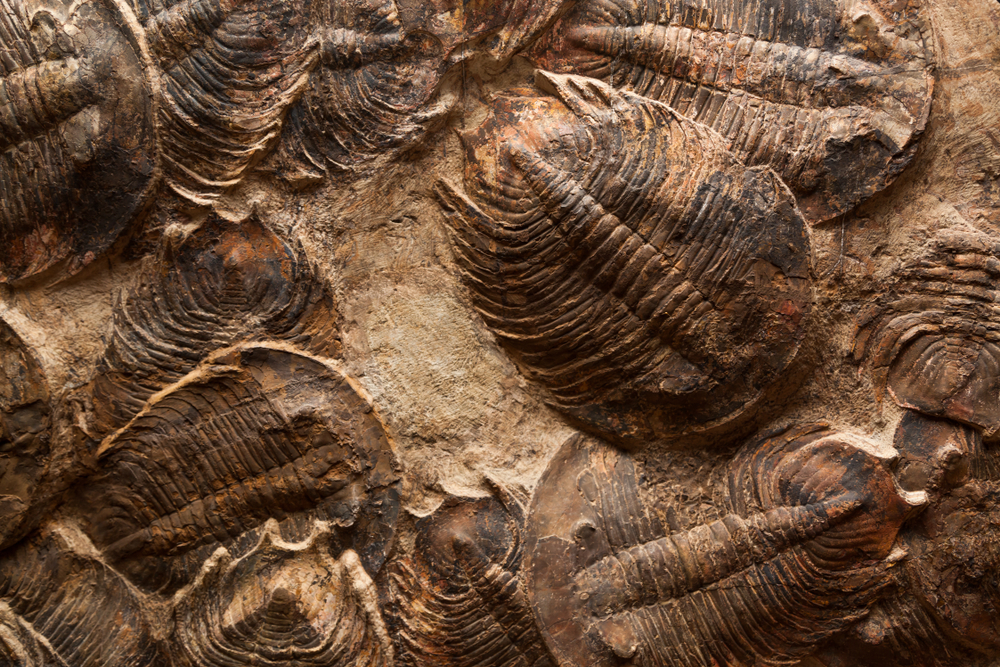
Warm Waters Helped Some Species Thrive After Earths Great Dying
www.discovermagazine.com
(Image Credit: Tami Freed/Shutterstock) While trilobites, like the ones pictured here, survived for millions of years, they did not survive the "Great Dying." However, clams took over the oceans in the aftermath of the end-Permian extinction, along with oysters, snails, and slugs.NewsletterSign up for our email newsletter for the latest science newsEarths largest mass extinction eliminated a lot of marine species. But it didnt eliminate them all. According to a study in Science Advances, warm, oxygen-depleted waters may have helped select survivors of the end-Permian extinction in the aftermath of the event around 252 million years ago, allowing them to expand their ranges throughout Earths oceans. The results reveal how marine animals have recovered from past mass extinctions and how they could recover from mass extinctions in the present and future, too.Our study has provided a simple environmental explanation, rather than an ecological one, for why certain survivors of the end-Permian extinction prospered, said senior study author Jonathan Payne, a paleobiology professor at Stanford University, according to a press release.Surviving the Great DyingDuring the Great Dying around 252 million years ago, approximately 80 percent of marine species disappeared from the face of the Earth. During the Great Dulling that followed, select species survived and thrived, spreading so extensively that the marine life in one corner of the oceans looked startlingly similar to the marine life in all other corners.Thanks to the success of these select species, marine populations moved from richly diverse communities before the end-Permian extinction to boringly alike communities after a transformation seen wherever you look, Payne said, according to the press release. Over the years, researchers have suggested several explanations as to why this transformation occurred. Some have proposed that the disappearance of certain predators and competitors allowed some of the surviving creatures to thrive. And others have proposed that the climate changes associated with the end-Permian era suited certain surviving animals more than others, allowing them to spread almost everywhere throughout the planet.To determine whether either of these theories hold water, Payne and a team turned to ocean temperatures, harnessing geochemical evidence to create an environmental model for the end-Permian era. Explaining the taxonomic homogenization in the aftermath of the extinction, the model suggests that certain creatures mainly mollusks flourished thanks to the onset of warmer water temperatures. Success in Warm Waters Applying evidence from experiments on extant marine animals, the team populated their model with the modern relatives of the creatures of the end-Permian era. Complete with mollusks like clams, oysters, snails, and slugs, the model showed how various animals mightve responded to the climate changes of 252 million years ago based on their modern relatives abilities to survive similar shifts in their environments. Still recovering from the intense volcanic activity that triggered the era, Earths oceans were warm in the aftermath of the end-Permian extinction and oxygen-drained. In fact, in addition to the impacts of water temperature, the teams model also considered the impacts of water oxygenation, finding that the eras oxygen-depleted waters were another factor in the mollusks worldwide success. A Model for the Past, Present, and FutureUltimately, the model allowed the team to study mass extinctions in a new way, giving them a better sense of why some animal groups made it through while others perished, Payne said, according to the press release.But its insights arent limited to the end-Permian extinction, however, as the model can also reveal how animals might fare in the present and the future, in the face of the looming mass extinction thats been brought on by human activity. Our model offers a great way of studying how animals respond to extreme changes in the environment, said lead study author Jood Al Aswad, a paleobiology Ph.D. candidate, also at Stanford, according to the press release. With anthropogenically spurred climate change, there has been some warning that if we continue, then in the future, were going to see taxonomic homogenization of organisms in modern oceans as well.Article SourcesOur writers at Discovermagazine.com use peer-reviewed studies and high-quality sources for our articles, and our editors review for scientific accuracy and editorial standards. Review the sources used below for this article:Sam Walters is a journalist covering archaeology, paleontology, ecology, and evolution for Discover, along with an assortment of other topics. Before joining the Discover team as an assistant editor in 2022, Sam studied journalism at Northwestern University in Evanston, Illinois.1 free article leftWant More? Get unlimited access for as low as $1.99/monthSubscribeAlready a subscriber?Register or Log In1 free articleSubscribeWant more?Keep reading for as low as $1.99!SubscribeAlready a subscriber?Register or Log In
0 التعليقات
·0 المشاركات
·89 مشاهدة


